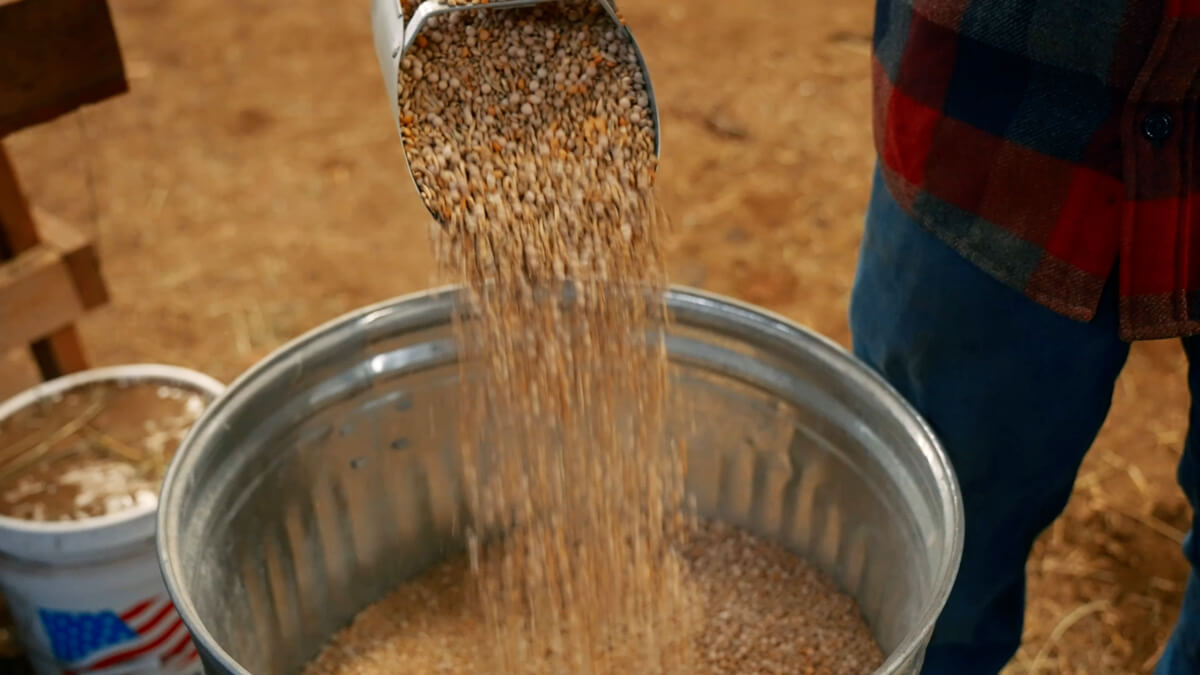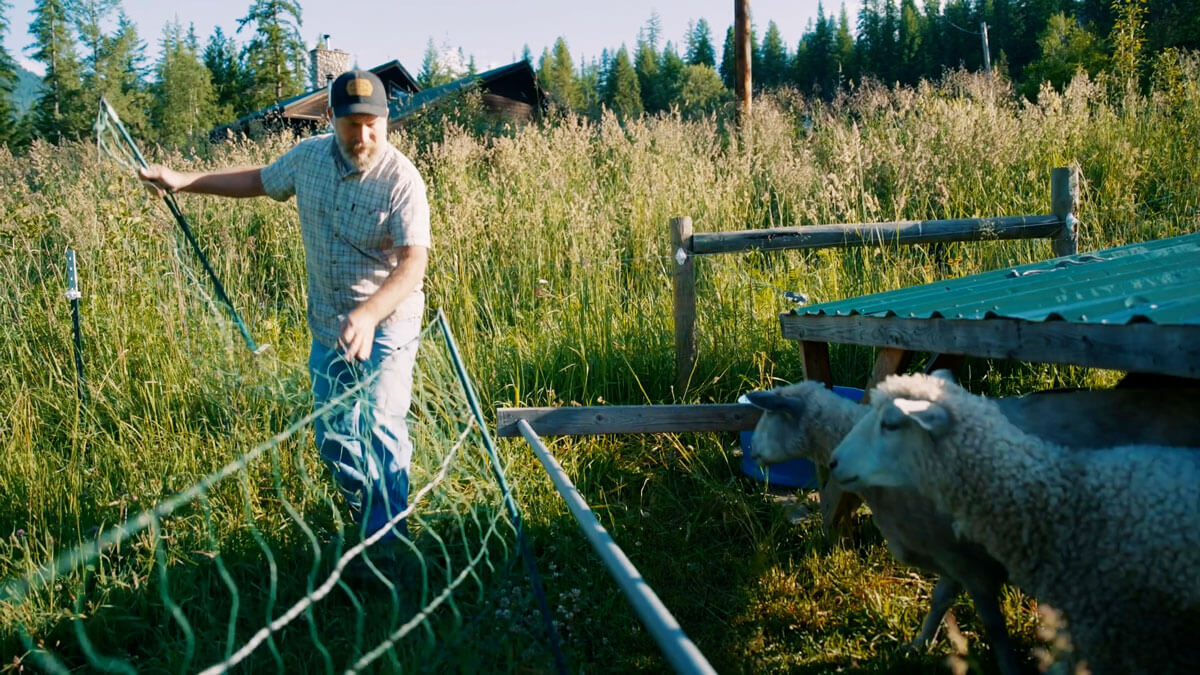Raising animals on your homestead gives you peace of mind about their care and feeding. But feed is expensive! So how can you save money? In this post, I’m sharing five ways you can save money on your feed bill.

Start Buying in Bulk
Tip number one is to stop buying feed by the bag or bale from your local feed store; instead, start buying in bulk and stocking your barn.
Buying all your feed once per year is a great goal to have. However, if you can’t do that, buy two weeks or two months’ worth. Or, whatever you’re used to buying, try and double it. Then, make it a goal to buy 3 months, 6 months or 9 months at a time until you can work your way up to buying a year’s worth of feed at once.
When buying hay in bulk, if you have the equipment to move them, switch to buying large bales. You get a better cost per ton. If you are not able to handle feed by the ton or ½ ton, you can still probably buy bagged feed by the pallet and get a bulk discount.
The bottom line is that whenever you buy in bulk, you get a better price per unit.

Buy Whole Grains
Tip number two is to stop buying the pre-mixed rations. These are more expensive and often have additives that you don’t want your animals to eat anyway. Instead, buy whole grains and mix them yourself.
Whole grains cost less as they are less processed. Which specific grains are not as important for the homesteader, we simply buy whatever is least expensive and try to get at least two grains to mix. The most common are oats, wheat and barley.
Sometimes you can get peas and corn, but it is getting harder to find these non-GMO. When you can combine buying whole individual grains in bulk, you’ll really double up on your savings.
We buy each grain individually and mix it ourselves into large metal cans.



Soak Your Grain
Tip number three is to soak, sprout or ferment the whole grains before feeding them to the animals. Whole grains can be hard for animals to digest, which causes wasted grain and can lead to some digestion issues, so soaking is a must for whole grains.
Fermentation is a bonus that adds to the nutritional value, but it’s not mandatory (and more challenging to do in the winter months). To ferment, you would soak the grains for 3-5 days (depending on temperature) instead of just 24-48 hours to soften the grains. Learn step-by-step how to ferment grains here.
We feed grains to our chickens, geese, ducks and pigs. What works for us is a simple 5-gallon bucket system where our grains are soaked for 3-5 days. Depending on the number of animals you’re feeding, you could easily adapt this method to work for you.
Because we have two dairy cows (and we make a lot of homemade cheese), we always start soaking grains in a base of water but then generally add some whey, excess milk, etc., for added nutrition. This isn’t necessary, but it certainly adds great nutrients and meets our zero-waste homestead goals.
Another option is to sprout your grains and let the sprouts grow up to a few inches long and then feed.

Grow Your Feed
Tip number four is to grow your own feed. Our goal here at Riverbend is to eventually not have to buy grains by growing all our own feed. Since we have a large production and a lot of animals to feed, it’s going to take a bit until we reach this goal.
This last year we grew a lot of extra winter squash and utilized some of the extra fruit from our trees. Get creative and use the perimeter of your garden or property to plant extra seed. With just a little effort, you can really cut down on feed costs.

Multi-Species Rotational Grazing
Tip number five is to utilize multi-species rotational grazing practices. On our 3.5 acres of pasture, we’ve been able to have our animals pass over it four times in one season. That’s with two dairy cows, three pigs, seven sheep, 450 meat chickens, and 12 turkeys.
By simply implementing rotational grazing practices for a small homestead, not only are we improving the land, but we’re providing for them from the land instead of the feed we’re saving for the winter months.
As a final bonus tip, we recommend fully utilizing your land to get all your animals working for you. Look to see where you can combine certain aspects: By utilizing multi-species rotational grazing, the chickens are fed by following the cows who are leaving their manure. Flies love the manure and lay larvae, which is free feed for the chickens (and keeps the fly population in control).
Furthermore, chickens can free-range and find most of the food they need by pecking and scratching for bugs. This may reduce their egg production, but the beauty of this method is that the eggs you are getting cost you nothing. You may also want to read this post on feeding chickens without chicken feed.
I hope this post encourages you to get creative in how you look at your land. Do your best to maximize everything you can to lower that feed cost and improve your family’s diet with home-raised meat.

More Posts You May Enjoy